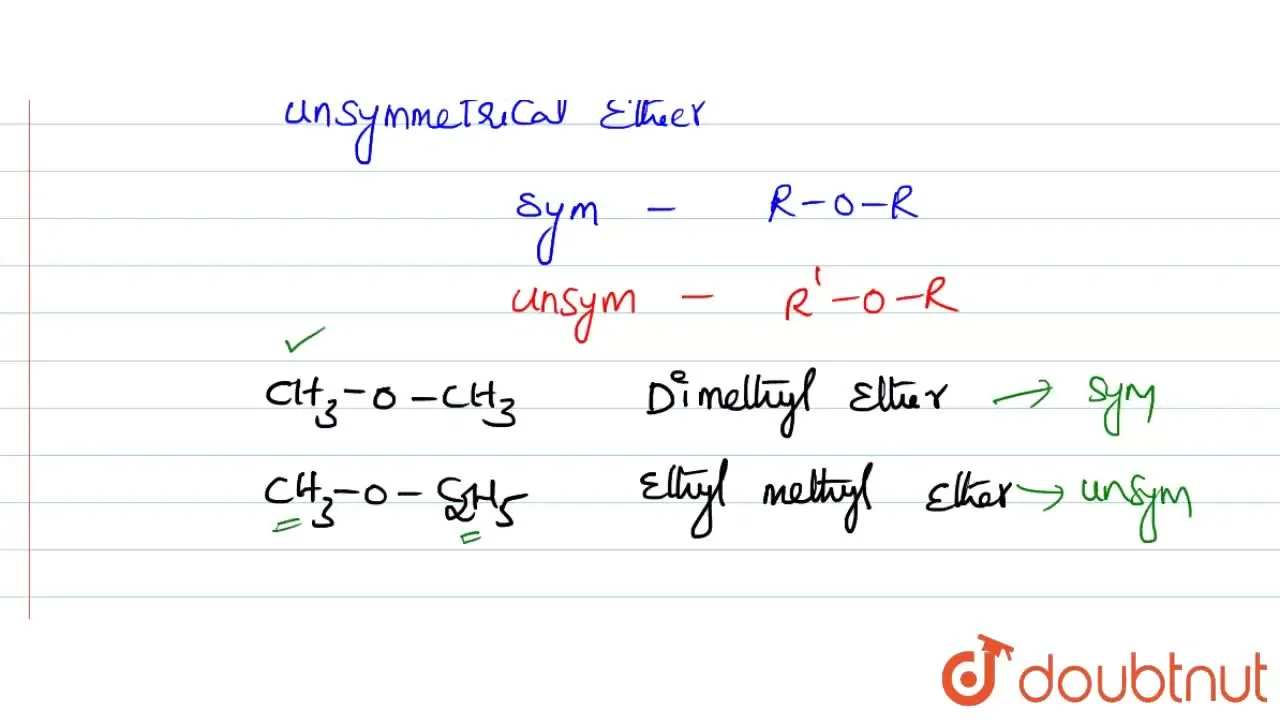Explain the following with an example:
i. Kolbe's reaction
ii. Reimer-Tiemann reaction
iii. Williamon's ether synthesis
iv. Usymmetrical ether
(i) Kolbe's reaction : Sodium phenoxide when heated with CO2 at 400K under a pressure of 4-7 atmospheres followed by acidification gives 2-hydroxybenzoic acid (salicylic acid) as the major product along with a small amount of 4-hydroxybenzoic acid. This reaction is called Kolbe's reaction.

(ii) Reimer-Tiemann reaction : Treatment of phenol with CHC 13 in presence of aqueous sodium or potassium hydroxide at 340 K followed by hydrolysis of the resulting product gives 2-hydroxybenzaldehyde (salicyialdehyde) as the major product. This reaction is called Reimer - Tiemann reaction.

(iii) Williamson's ether synthesis : It involves the treatment of an alkyl halide with a suitable sodium alkoxide to obtain ethers. The sodium alkoxide for the purpose is prepared by action of sodium on a suitable alcohol. In this reaction alkyl halide should primary. Secondary and tertiary halides will predominantly give an alkene.
CH3CH2−¯¯¯O−Na+Sodium ethoxide+Br−CH2CH3Ethylbromide330K−−→SN2CH3CH2−O−CH2CH3Diethylether+Na+Br−
(iv) Unsymmetrical ether : If the alkyl or aryl groups attached to the oxygen atom are different, enthers are called unsymmetrical ethers. For example, ethylmethylether, 4-chlorophenyl-4- nitrophenyl ether, ect.
Similar Questions
Explain the following with an example for each :
(i) Kolbe's reaction
(ii) Reimer-Tiemann reaction
(iii) Williamson ether synthesisView SolutionExplain the following with an exampe in each :
(i)Kolbe's reaction.(i)Reimer-Tiemann reaction.(iii)Williamson ether synthesis.View SolutionExplain the following with atleast one example:
Haloform reaction.View SolutionExplain the following with at least one example : Carbylamine reaction.
View SolutionWrite the equations involved in the following reactions :
(i) Reimer-Tiemann reaction
(ii) Williamson's ether synthesisView SolutionExplain the following reactions withan example for each :
(i) Reimer-Tiemann reaction
(ii) Friedel - Crafts reaction.View SolutionWrite the equation involved in the following reaction :
(i) Reimer -Tiemann reaction
(ii) Williamson synthesisView SolutionExplain the following giving one example for each :
(i) Reimer-Tiemann reaction.
(ii) Friedel Craft's acetylation of anisole.View SolutionExplain the following with examples :
(i) Williamson ether synthesis (ii) Unsymmetrical ethersView SolutionGive an example (equation) for each of the following name reactions :
Reimer-Tiemann reaction.View Solution


